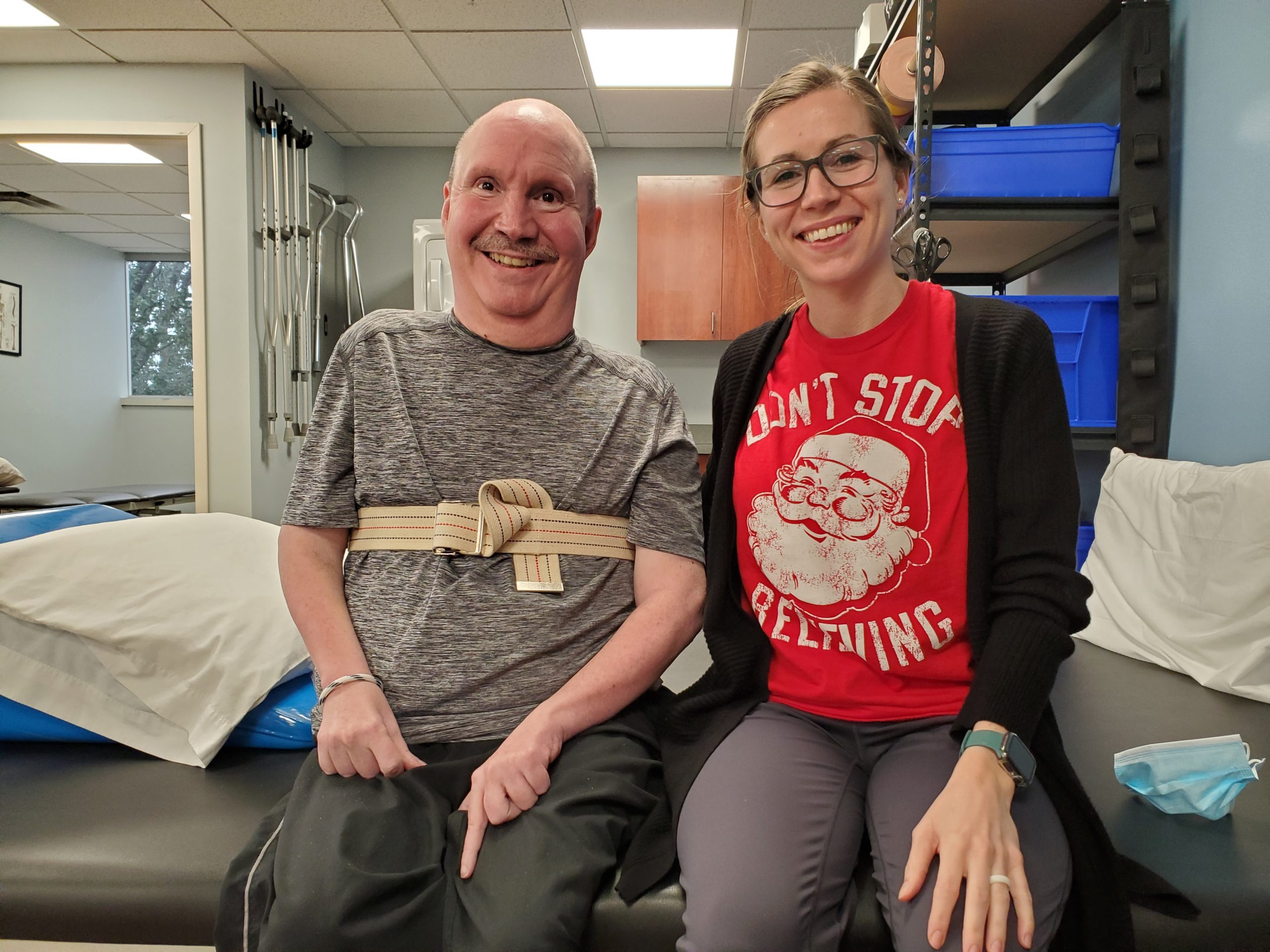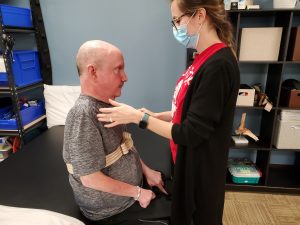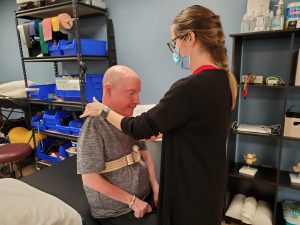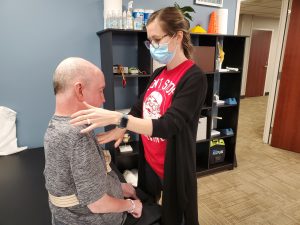Seated Balance Exercises For SMA Patients

From left, SMA patient Michael Morale smiles with physical therapist Emily Jones. (Photo courtesy of Michael Morale)
Throughout Michael’s physical therapy treatments, there have been several progressions of seated balance activities that we have worked on as he has demonstrated improved abilities to perform these activities. When we were first able to transfer Michael to the therapy table, all that was performed in a seated position was letting Michael attempt to balance while sitting without support, meaning nothing was touching him except the table where he was sitting. This was challenging for him at first, but over time, and with other strengthening activities performed in his wheelchair as well as practicing this activity, this became an easy task for him and we increased the difficulty level for him to continue to progress.

We then added seated perturbations with a given time to recover from each motion. Perturbations are a force from the outside, usually tapping the patient in different directions, in which the patient must use different muscles to right themselves back to the starting position without losing their balance. Once this became easier, we made it harder by adding another distraction, such as a medicine ball bouncing on the table beside him, along with the perturbations, to attempt to throw Michael’s balance off and force him to use his muscles and core control to recover. Another challenge we have added in the past is to have him sit on an unstable surface, such as a foam cushion, while performing these activities, to increase the difficulty of recovering from the perturbations.
Recently, we have added isometric contractions with no notable cadence, and no warning of stopping the contact to test Michael’s reaction time for recovery. This is performed with Michael sitting on the therapy table while we apply force, and requiring him to resist us in the direction we are pushing to perform an isometric contraction. We then take the force away and have him maintain an erect posture and not lose his balance with a quick reaction time. This not only tests Michael’s core strength and sitting balance but also his ability to react quickly to a situation and improve his safety while performing activities throughout the day. If he were to be bumped while sitting in his wheelchair, he would need to react quickly to keep an erect posture. Even though he has a seatbelt that keeps him in place, to be able to maintain his position and not require assistance to recover would improve his independence and confidence throughout his activities.


Once this becomes less challenging for Michael, we will perform this new activity on an uneven surface and continue to increase the difficulty. We could also have Michael perform a position change prior to the isometric contraction and hold his position somewhere outside of a neutral position. This will be attempted once he has mastered the prior mentioned activities as this will be much more challenging. As with anything, please ensure safety for you and your patient during these activities. Make sure there is someone available to assist you and guard your patient in case they were to lose their balance. The safety and comfort of the therapist and the patient come first in any situation.



